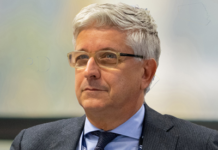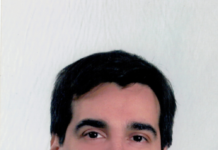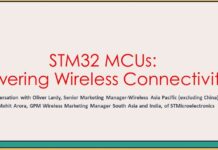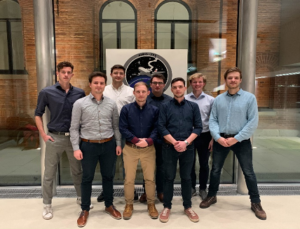
At present, it is only possible to transport equipment or spare parts into space at great expense. In an interview, Torben Schaefer, press spokesman for the AIMIS-FYT team, explains more about this exciting project:
What gave the impetus to choose the Fly Your Thesis 2020! campaign of ESA. Where did the idea to perform 3D printing in zero gravity come from?
Torben Schaefer: The idea came from the inspiration of our space professor at the University of Applied Sciences in Munich – Mr. Prof. Markus Pietras. He had previously awarded project work on this topic to students who were conducting experiments with this technology. This led to the interest and the idea to develop the Fly Your Thesis 2020! program of ESA.
The procedure we are investigating is intended to expand the possibilities of future space missions and reduce costs. Today’s missions are severely limited by the high forces involved in rocket launches, the maximum take-off mass, and the limited volume inside the rocket.
Our 3D printing process can directly print three-dimensional structures in space using a UV-curable adhesive or casting compound. The combination of novel technology and the almost unlimited freedom of shapes and applications inspires our entire team and was decisive for the further exploration of this technology. In addition, we were all fascinated by space from a young age. Our partner team AIMIS-REXUS carried out a first technology demonstration on the sounding rocket REXUS. We – AIMIS-FYT – will go one step further and test the individual basic operations in weightlessness.
How did you come to ViscoTec in the process?
Torben Schaefer: Unlike conventional 3D printers for hobby applications, our printing process prints with a UV-curing resin. This resin has to be printed in doses in order to produce 3D structures. After some research, we came across ViscoTec, who already offer a 3D print head for such applications.
Since the printing material – in our case medium to high viscosity resins – is a central part of the printing process, we initially decided to use resins with fast curing times. At the same time, the requirements for conveying and dosing the material were defined, such as a very precise and constant conveying of the material even at high viscosity. From our point of view, ViscoTec is one of the leading companies in the field of conveying and dosing of medium to high viscosity material, so we quickly sought direct contact. A further advantage is that the sponsor of our resins works closely with ViscoTec and therefore further synergy effects could be used.
Why did you decide on ViscoTec print heads?
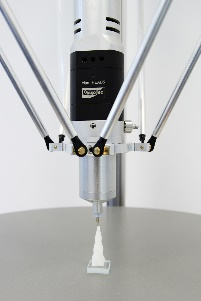
Torben Schaefer: In our printing process, a precise, pressure-stable, and constant delivery of the material is important, and the parameters should be kept constant throughout the entire process. This is ensured above all by the precise stepper motor, the optimized material feed & venting, and the simple Luer-Lock connection for any nozzles. The entire print head weighs less than 1kg and has a compact shape so that it can be moved with precision in space to print the desired shapes. In addition, the feed rate of the print head, which is crucial for our experiment, can be individually adjusted to our requirements at any time.
Which material is to be printed? And why did you decide on this material?
Torben Schaefer: We are currently testing two different materials from the Delo company. Both are universally applicable, light-curing in a wavelength range of 320 – 420 nm and show good stability and strength after the curing process. Furthermore, both materials react relatively quickly with UV light and therefore have a sufficiently short curing time.
Photobond AD491 is a UV and light curing acrylic adhesive with a medium viscosity. It is characterized by its fast curing time and high extrusion speed. In addition, the curing line can be controlled at will by targeted UV irradiation.
However, in order to be able to print even stiffer structures, we are planning to test the material Katiobond GE680 during the parabolic flights. This is a highly viscous UV- and light-curing epoxy adhesive, which our partner team AIMIS-REXUS will also test on their research rocket. This allows the results to be compared between the teams. The advantage of Katiobond GE680 is that the curing process only needs to be initiated by a single UV exposure and the material is completely cured after 24 hours.
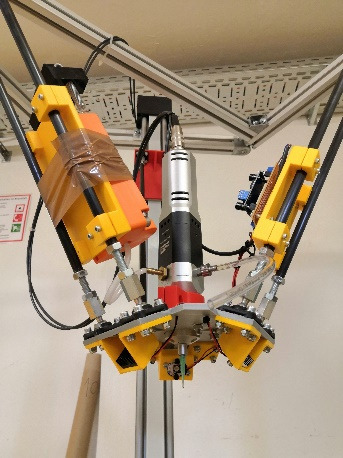
How do you imagine the experiments will go? What exactly will you print in November?
Torben Schaefer: The experiments are based on the four basic operations we have identified for printing structures (e.g. truss structures) in weightlessness and are ordered according to increasing complexity:
– Straight rod
– Straight bar with start / stop points
– Freeform bar
– Bar connectors
By combining these basic operations, it should be possible in the future to print complex overall structures.
On three days of flight we will fly a total of 90 parabolas and therefore we can conduct a total of 90 experiments. The experiments are divided into the four basic operations and within each basic function we vary different parameters to identify their influence on the printing result. Therefore, we equip our experiment with a variety of sensors, such as thermal imaging cameras, air pressure sensors, temperature sensors, etc. The result is 90 printed rods of various sizes and shapes, which are subsequently analyzed in detail.
Please briefly describe the possibilities that will arise if the project is successful. What is the added value for (European) aerospace?
Torben Schaefer: Our project is an advanced technology demonstration of the four basic 3D printing operations. The knowledge gained from the experiments will be used to further optimize the printing process and to prove the primary functionality of additive manufacturing in zero gravity. In the future, the technology can then be further improved and perhaps even tested in space. This is because the technology offers the opportunity to drastically reduce the costs of satellites and other space missions.
How will you prepare for the experiments between now and November?
Torben Schaefer: We are currently in the design phase of the experimental setup as our prototype does not meet all the requirements for successful implementation in zero gravity. The next milestone is the CDR (Critical Design Review) at the end of April. At that time, all design work will be completed, and we will start with the assembly of the experiment setup. Further parallel tests with the prototype will be carried out and at the beginning of June the test phase of the airworthy experiment will take place.
The entire project is very much oriented towards a real ESA project and therefore covers almost all important areas. In addition to the technological challenges, students are confronted with challenges regarding organization, leadership, public relations, and team dynamics – from structured project plans, social media posts, designing their own website to leading smaller project teams. The results of the experiments will be available in November.




